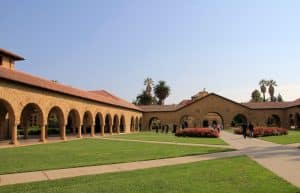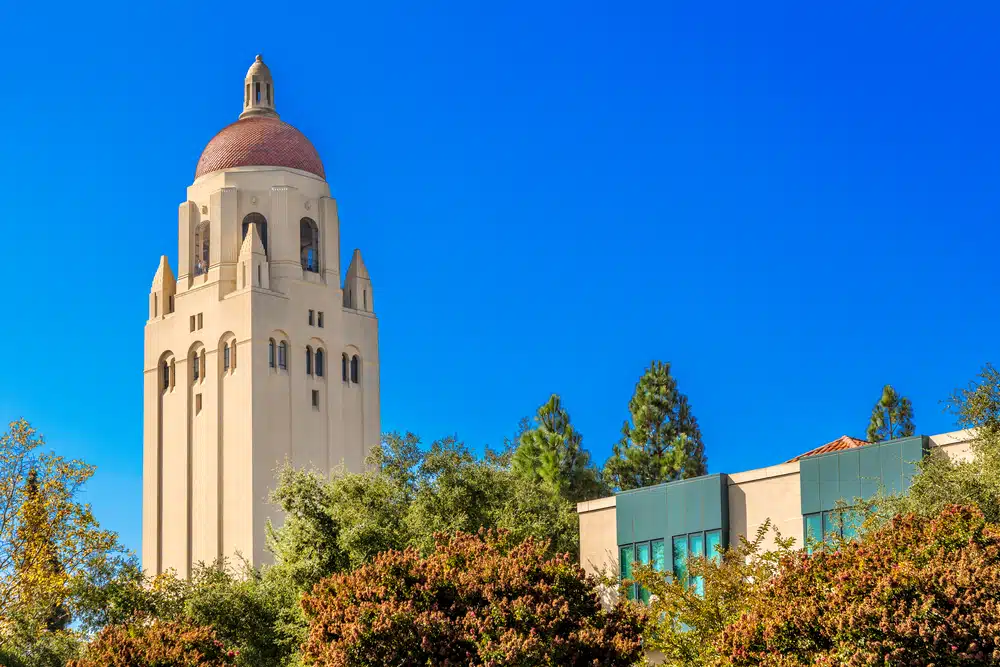Exploring Stanford’s Pre-College Programs
The transitional period between high school and university can often be challenging for many students. It’s a stage of life where significant decisions about the future must be made. However, Stanford University’s pre-college programs can help in this time of transition, offering immersive learning experiences that prepare students well for university life.
Understanding the Purpose of Pre-College Programs
Pre-college programs play a key role in helping high school students understand the rigors and demands of a university education. These programs expose students to the academic pressures of university and help them develop essential skills required to thrive in a university setting.

Attending a pre-college program can be a transformative experience for high school students. It gives them a unique opportunity to immerse themselves in a university environment, gaining valuable insights into their future academic journey. These programs offer a glimpse into the world of higher education, allowing students to explore various fields of study and discover their passions.
The Benefits of Pre-College Programs
Stanford’s pre-college programs afford multiple benefits to students. They offer rigorous coursework that aligns with university standards, providing students with a taste of the demanding academic environment they are likely to encounter. By engaging in challenging coursework, students can develop a strong work ethic and improve their time management skills, which are crucial for success in college.
In addition to academic preparation, pre-college programs also focus on fostering personal growth and development. Through interactive workshops and seminars, students have the opportunity to enhance their communication and leadership skills. These programs encourage students to step out of their comfort zones, promoting self-confidence and resilience.
Furthermore, the pre-college curriculum strongly emphasizes developing critical thinking, inductive reasoning, and research skills. Students are encouraged to think critically, analyze complex problems, and propose innovative solutions. These skills are valuable in an academic setting and in various professional fields.
Some pre-college programs even offer college credits, allowing students to earn academic recognition before they officially begin their university journey. This gives them a head start and demonstrates their commitment and dedication to their education.
How Pre-College Programs Prepare Students for University Life
University life is more than just academics. Stanford’s pre-college programs also take the initiative to familiarize students with the university’s social and administrative aspects. They understand that a successful university experience involves more than just attending classes and completing assignments.
During these programs, students have the opportunity to interact with peers from diverse backgrounds, fostering a sense of community and promoting cultural understanding. They learn to appreciate different perspectives and develop lifelong friendships. By engaging in group projects and collaborative activities, students also enhance their teamwork and communication skills, which are essential in a university setting.
Moreover, pre-college programs help students navigate the administrative aspects of university life. They learn how to manage their own schedules, balance academic and extracurricular commitments, and seek support when needed. By gaining exposure to university resources and support services, students become better equipped to handle the challenges that may arise during their college years.
Overall, pre-college programs serve as a bridge between high school and university, providing students with a comprehensive understanding of what lies ahead. These programs prepare students academically and empower them with the necessary skills and knowledge to succeed in a university environment. Participating in a pre-college program allows students to embark on their higher education journey confidently and enthusiastically.
Overview of Stanford Pre-College Programs
Stanford University offers a range of pre-college programs designed to cater to diverse academic interests and career goals. These programs provide an incredible opportunity for high school students to immerse themselves in a stimulating and intellectually challenging environment, gaining valuable knowledge and skills that will prepare them for future academic and professional success.
Stanford’s pre-college programs are renowned for their excellence and innovation. They are designed to foster critical thinking, creativity, and collaboration, enabling students to explore their passions and develop a deep understanding of various subjects. With a commitment to academic rigor and a supportive learning community, Stanford ensures students receive a transformative educational experience.
Types of Programs Offered
The Stanford Pre-Collegiate Summer Institutes place emphasis on the development of skills in addition to the acquisition of knowledge. These institutes are designed to create environments that foster creativity and collaboration, and students learn from their instructors and one another during these institutes.
The following is a list of the Stanford pre-college programs open to high school students.
Stanford Pre-Collegiate Summer Institutes
The Stanford Pre-Collegiate Summer Institutes (SPCS), which is one of the many pre-collegiate programs at Stanford University, is the one that provides the most diverse selection of classes. Participants have their pick of thirty different summer courses spanning a variety of disciplines, including engineering, philosophy, and creative writing.
Students participate in a two-week program during which they hone their understanding of a single topic by concentrating exclusively on it. Due to recent changes that increased the number of available courses, students now have a wider variety of selections than in the past.
The classes are held daily, Monday through Friday, for a total of four hours (with the additional time needed to complete assignments). The number of students in your class is limited (the average is fifteen), and you and your fellow students will engage in frequent face-to-face communication through the use of seminars, workshops, and other activities.
In spite of the fact that the classes are offered online, Stanford has made it very apparent that it is dedicated to ensuring that these programs are both participatory and an excellent way to get to know new people.
The term “selective” is used to characterize the admissions process for SPCS at Stanford. Every candidate will be required to send in a copy of their high school transcript, a representative sample of their student work, and at least one letter of recommendation written by a teacher.
Stanford Summer Humanities Institute
The Stanford Summer Humanities Institute is a program that runs for a comparable amount of time and follows a structure comparable to that of the SPCS, with the exception that its classes are solely devoted to the study of the humanities.
You can attend class in the morning or early evening, and it is taught by Stanford graduate teaching assistants (with the syllabi designed by Stanford professors). In the same vein as SPCS, the classes will place emphasis on working together with the other students in the room.
The coursework is really challenging, on par with what one would expect from a standard Stanford class. In addition, the students will have the opportunity to collaborate with guidance counselors, teaching assistants, and professors on the development of extensive research articles.
Along the same lines as SPCS, the program is selective, and all applicants are required to submit transcripts, samples of their previous work, and at least one letter of recommendation from a teacher who teaches either English, history, or social science.
Stanford Medical Youth Science Program
The Stanford Medical Youth Science Program has some rather stringent standards to meet in order to participate.
Eligible candidates must be juniors in high school, come from low-income families with a limited history of college attendance, reside in one of the twenty counties located in Northern or Central California, and have demonstrated an interest in and aptitude for science.
However, if you are one of the fortunate thirty individuals chosen for the program each year, it has the potential to be a life-changing experience for you. You will spend the next five weeks participating in professional seminars, professional networking events, and professional lectures, all of which are geared to help prepare you for a career in medicine and to be a future leader in the health area.
You will receive guidance from academic members, individuals working in the medical field, as well as college students as part of the program’s emphasis on the importance of mentorship.
In addition, every person who participates in the program contributes to research on public health to eliminate health disparities. And there is no expense involved! Donations are used to cover the costs of the program.
Stanford Math Circle
The Stanford Math Circle stands out from the other programs offered by SPCS due to its unique focus. Students interested in arithmetic and who would like additional practice answering math questions along with other students who share their interests can participate in an after-school program held during the regular school year.
On either Wednesdays or Thursdays once a week, members of the Stanford Math Circle get together. During the circle, students will collaborate with one another to find solutions to the challenges that are presented by the instructor.
Since there is a strong emphasis placed on collaboration and conversation, this is not a program in which participants work alone to find solutions to challenging mathematical problems.
Signing up to be a part of the Stanford Math Circle is open to students in grades 1 through 12; however, as there are a limited number of spots available and the demand is great, you should sign up as soon as possible to ensure you get a position. You can engage in many sessions; each lasts one academic quarter.
Stanford Pre-Collegiate University-Level Online Math & Physics
Both of these programs, one in mathematics and one in physics, are intended for more advanced pupils in high school. Nine distinct math classes are available, ranging from pre-calculus to differential equations. In addition, there are four different physics classes.
The primary distinction between these programs and the other options available through Stanford pre-college programs is that these programs are completed at the participant’s own speed.
Once you enroll in a class, you are free to move at your own pace through the material, in contrast to the other programs, which emphasize collaborative activities and group discussions (although there are regular times for class discussions). You should devote between 8 and 12 hours per week to the class.
If they pass the class, they have the opportunity to earn credit through the Stanford Continuing Studies Program, which is equal to three units per class. However, to take advantage of this opportunity, their exams must be independently proctored at their respective schools or local libraries or testing centers (i.e., not taken at home).
It is crucial to remember that these credits do not count toward a college degree; thus, they cannot be included on a college transcript or serve as a substitute for college coursework.
Stanford University Mathematics Camp
Students entering the 10th and 11th grades who have “an extraordinary interest in and competence in mathematics” are eligible to attend the Stanford Mathematics Camp (SuMaC).
The program’s content extends beyond a standard high school curriculum, and the difficulty level is comparable to that of college-level mathematics courses. There is one in abstract algebra and number theory and another in algebraic topology. Both of them are separate tracks.
Live classroom instruction occurs Monday through Friday for a total of two hours each day during the course. If you decide to participate in SuMaC, you should be prepared to put in a lot of effort because Stanford emphasizes numerous times that this is an “intense” camp with a “heavy” schedule.
The majority of the other SPCS programs are not as competitive as SuMaC, and its website refers to those who participate in the program as an “exclusive group.”
In order to apply, students are required to submit transcripts, work examples, and a recommendation from a (math) teacher, just like they would be required to do for the majority of other SPCS programs. In addition, students are required to take a SuMaC admissions test, and it is also recommended that they submit scores from other standardized math tests.
Embarking on a Stanford pre-college program is an extraordinary opportunity to gain a competitive edge, expand your horizons, and discover your true potential. Whether you explore a specific academic discipline or engage in interdisciplinary studies, Stanford’s pre-college programs will inspire and empower you to pursue your passions and make a meaningful impact on the world.
Eligibility and Application Process for Stanford Pre-College Programs
The eligibility requirements for Stanford’s pre-college programs vary slightly depending on the specific program. However, criteria like academic excellence, interest in the subject area, and age restrictions must be met.
Who Can Apply?
Stanford pre-college programs predominantly cater to high-achieving students ranging from middle school to high school. To be more specific, students in grades 8–11 at the time of application submission are eligible. Students with a serious interest in the subject area and a track record of academic excellence are encouraged to apply. These programs are not limited to students from a specific geographic location or educational background, as Stanford aims to create a diverse and inclusive learning environment.
Whether you are a budding scientist, an aspiring writer, or a future entrepreneur, there is a pre-college program at Stanford that can help you further develop your skills and knowledge in your chosen field. The programs are designed to challenge and inspire students, allowing them to explore new ideas, collaborate with peers, and engage in hands-on learning experiences.
Steps to Apply
Application to Stanford pre-college programs is typically online-based. The university requires submission of an application form along with necessary supplemental materials. These materials include academic transcripts, sample work, and an optional video essay. The application process is designed to assess students’ academic abilities, personal interests, and potential for growth.
Once the application is submitted, a team of admissions officers carefully reviews each application, considering various factors such as academic achievements, extracurricular involvement, and personal statements. The selection process is highly competitive, as Stanford receives a large number of applications from talented students around the world.
It is important for applicants to showcase their unique qualities and demonstrate their passion for the subject area they wish to explore. The personal essay provides an opportunity for students to express their motivations, goals, and how they believe the pre-college program will contribute to their personal and academic development.
Upon acceptance into a Stanford pre-college program, students can immerse themselves in a vibrant and intellectually stimulating environment. They will have access to world-class faculty, state-of-the-art facilities, and a supportive community of like-minded peers. The programs offer a blend of rigorous coursework, hands-on projects, and engaging discussions, allowing students to deepen their understanding of the subject matter and develop critical thinking skills.
What to Expect from Stanford Pre-College Programs
Participating in one of Stanford’s pre-college programs provides students with a dynamic and engaging experience. It is characterized by challenging coursework, enriching connections, and comprehensive support systems to optimize learning outcomes.
Students who embark on Stanford’s pre-college programs can expect an academic experience beyond the ordinary. The program emphasizes high academic quality and rigor, ensuring students are challenged to reach their full potential. Under the guidance of experienced educators, students engage in coursework designed to stimulate critical thinking and problem-solving skills.
But it doesn’t stop there. Stanford’s pre-college programs offer students the unique opportunity to connect with existing Stanford students. Through collaborative projects, discussions, and mentorship, participants gain valuable insights into the university experience. These interactions foster a sense of community and provide a glimpse into the vibrant intellectual atmosphere that Stanford is renowned for.
Academic Experience
Stanford’s pre-college programs emphasize high academic quality and rigor. Students learn under the guidance of experienced educators and have the chance to engage with existing Stanford students. The academic training and challenges they encounter in these programs prepare them excellently for a university environment.
Furthermore, the academic experience is not limited to the classroom. Stanford’s state-of-the-art facilities and resources are at the disposal of pre-college students. From cutting-edge laboratories to well-stocked libraries, participants have access to everything they need to explore their academic interests and pursue their passions.
Moreover, the program encourages interdisciplinary learning, allowing students to explore a wide range of subjects and discover new areas of interest. Whether it’s delving into the complexities of astrophysics or unraveling the mysteries of ancient civilizations, students have the freedom to tailor their academic experiences to suit their individual interests and aspirations.
Social and Extracurricular Opportunities
Participating in pre-college programs at Stanford isn’t limited to academics. Students also have access to loads of social and extracurricular opportunities. These include cultural events, recreational activities, and field trips that promote a well-rounded experience.
Immersing themselves in the vibrant campus life, students can attend concerts, art exhibitions, and theater performances, exposing themselves to Stanford’s rich cultural tapestry. They can also participate in various clubs and organizations, allowing them to pursue their hobbies and interests outside the classroom.
Stanford University’s pre-college programs also organize exciting field trips that take students beyond the campus and into the surrounding area. From exploring the natural wonders of nearby national parks to visiting renowned museums and research institutions, these outings provide students with a broader perspective and a deeper appreciation for the world around them.
Furthermore, recreational activities are an integral part of the pre-college experience. Students can take advantage of Stanford’s state-of-the-art athletic facilities, engaging in sports and fitness activities that promote a healthy and active lifestyle. Whether it’s playing a game of basketball, swimming laps in the pool, or going for a run on the scenic trails, there are plenty of opportunities for students to stay active and have fun.
By offering promising students the chance to experience university life before they officially step into it, Stanford’s pre-college programs help shape future leaders and scholars. They provide students with the tools they need to succeed in university and beyond, paving the way for a promising academic future.
If you need help putting the finishing touches on your college applications, at AdmissionSight, we have over 10 years of experience guiding students through the competitive admissions process.
AdmissionSight can help you put your best foot forward when applying to college this fall. Contact us today for more information on our services.









































